Evan Barosay
Hazel Leung
Miriam Wagner Valladolid
Samantha Uppalapati
Wenshuo Li
5 Weeks
May 2018 ~ Jun 2018
Social Computing
Google Spreadsheet
Google Script
User Research
User Interview
Survey
Sketch
About
International long-haul flights have been a painful process
for a long time.
Long flights sparked an interest for delving into the unique
issues of plan rides and
creating technology for this social environment. People often
find themselves bored and
wasting their time on the plane, which inspired us to think
the question - how might we
improve the experience on an airplane and allow people to do
something more meaningful?
Our team was tasked to invent, prototype, and evaluate a
novel social computing experience that
is functional and a co-located, synchronous interaction for
a group setting.
Through group-prototyping, iterations, and feedback, we
worked to provide a unique social
experience that alleviates the painful process of long
haul flights, as well as connecting
passengers on the plane.
My Role
UX Researcher, Prototype Creator
Understanding the user, user needs, and user environment was
critical for the development of our social computing tool. I
took lead in user research to guide our team to understand and
empathize with a plane passenger. I conducted in-person user interviews,
online research, and a series of competitive analysis. From user research,
the team moved on to prototyping. After iteration, I compiled our
second version of the prototype based on what we found from user
testing and feedback.
Prototype Version 1
To understand our social setting, we conducted
qualitative research through in-person
interviews and surveys, online research, and
competitive analysis. We were able to find
general trends through our participants’ answers. On our first iteration, we built a functional prototype using Google Spreadsheets,
Google Forms, and Google Maps. Through storytelling, we described our social
context to our participants, and asked them to play specific roles (of visitors
and locals). We provided them with detailed instructions of what to do and how
to use our ‘Minimal Viable Prototype’ to interact with each other through the
system, and lastly created a survey to get feedback. The emergent behavior
we were hoping to see was an instructional scaffolding for local culture,
points of interests, and other relevant information between local residents
and visitors, and an increase in the amount of social interaction between
passengers. We were looking for indicators such as the users successfully
accomplishing the tasks without encountering many slips/mistakes, their
positive feedback when reviewing our idea, and a successful acquisition of
interesting information that wasn’t previously available. Although we got
some positive reviews such as the originality and value of adding Google Maps
to our MVP, our main critique was that while visitors would be interested
on it, locals wouldn’t have any incentive to participate on our app.
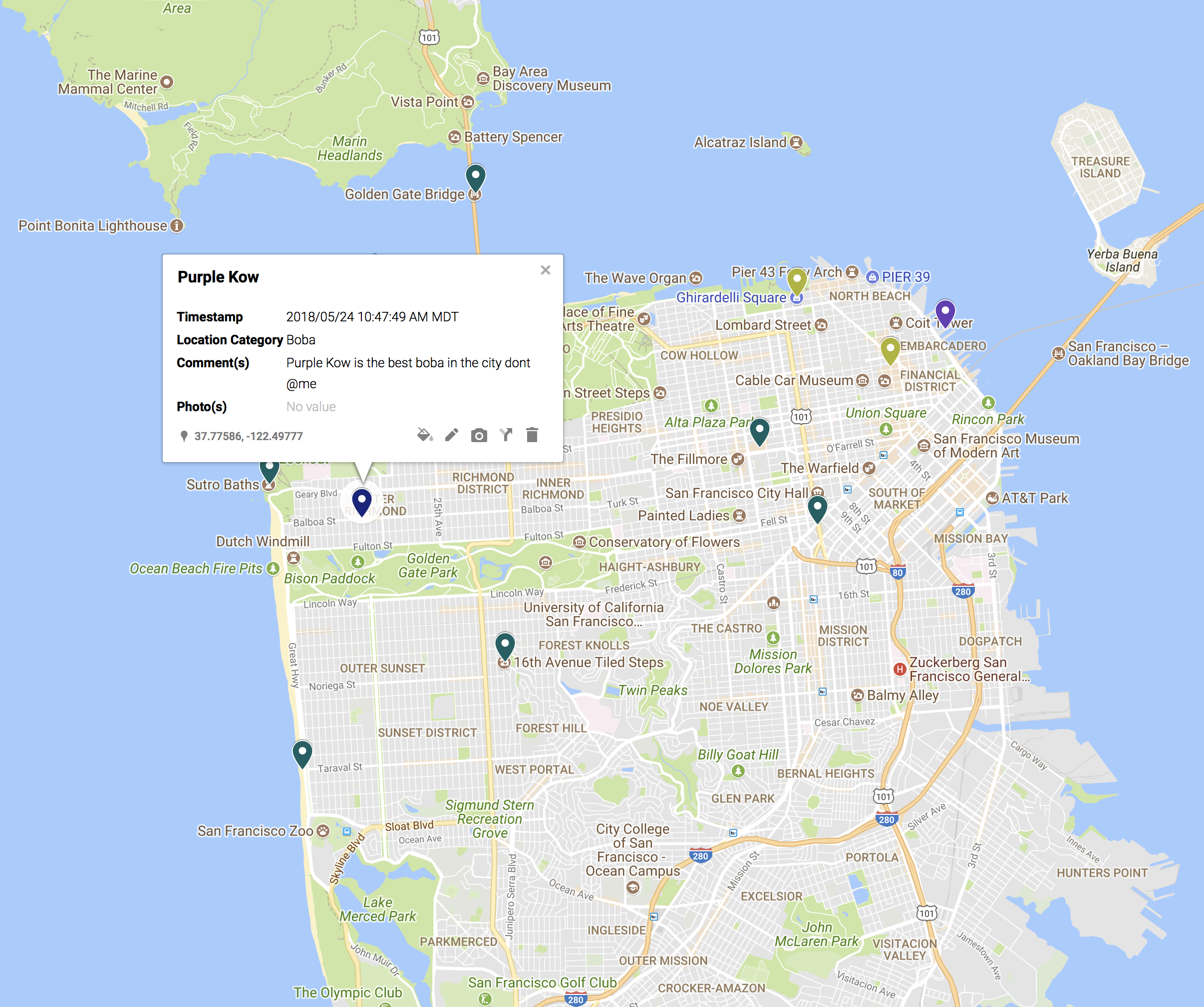
Iteration
To improve the weaknesses of our first prototype, we iterated with the objective
to focus more on the overall experience rather than making an information-focused
app, since that could already be found on travel guides and it would be only
valuable to visitors. In that way, we decided to add a fun quiz (based on the
popular Buzzfeed ones) to our app that both locals and visitors could play
and would be entertained with. We also improved on the aspect of our app by
creating graphic screens using Sketch that would resemble those of an airline,
and implement them with our game.
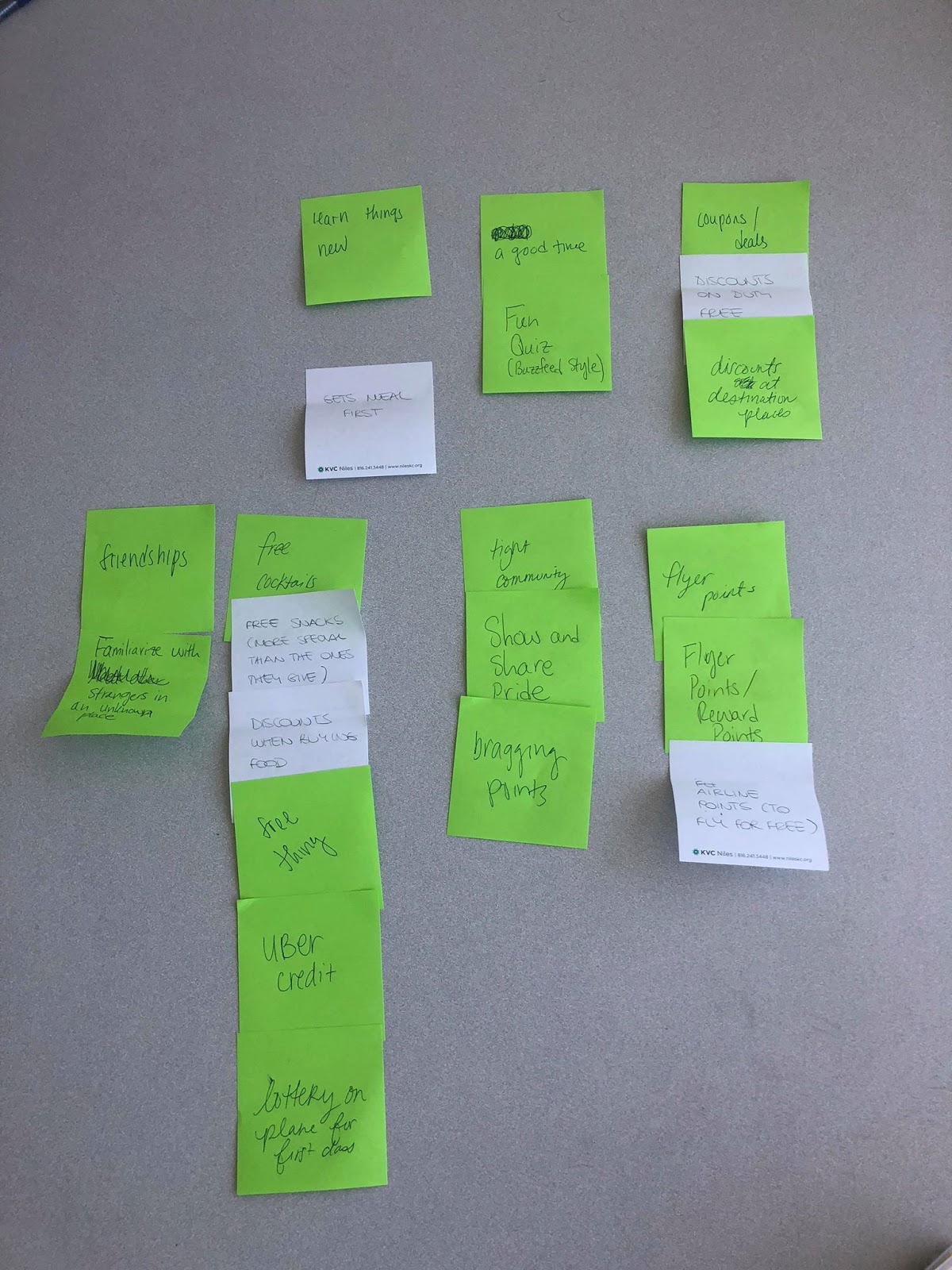
Prototype Version 2
In our second version of our prototype, people would take the “Buzzfeed styled quiz”,
find the location pin based off their quiz results on the map provided, and
successfully be able to speak with people in the chatroom to coordinate travel
plans or start casual conversation about the destination they’re headed to. When
prototyping, we asked users to first take the quiz, and afterwards
we explained the motives behind the quiz. Based on a users preference to
certain pictures of food, places, hotels, etc the quiz result outputted an
‘ideal itinerary’ for that user’s responses.
From there, we incorporated our
GoogleMaps feature by having a link that led the user to a map of their ideal
itinerary locations, so that they could see where everything was in proximity
to each other. Users were also able to see the rest of the plane passengers’
itineraries but checking and unchecking the side panel results on the left-hand side.
We also provided a GoogleDoc that allowed passengers to use the chat room to
interact with each other and discuss their results.
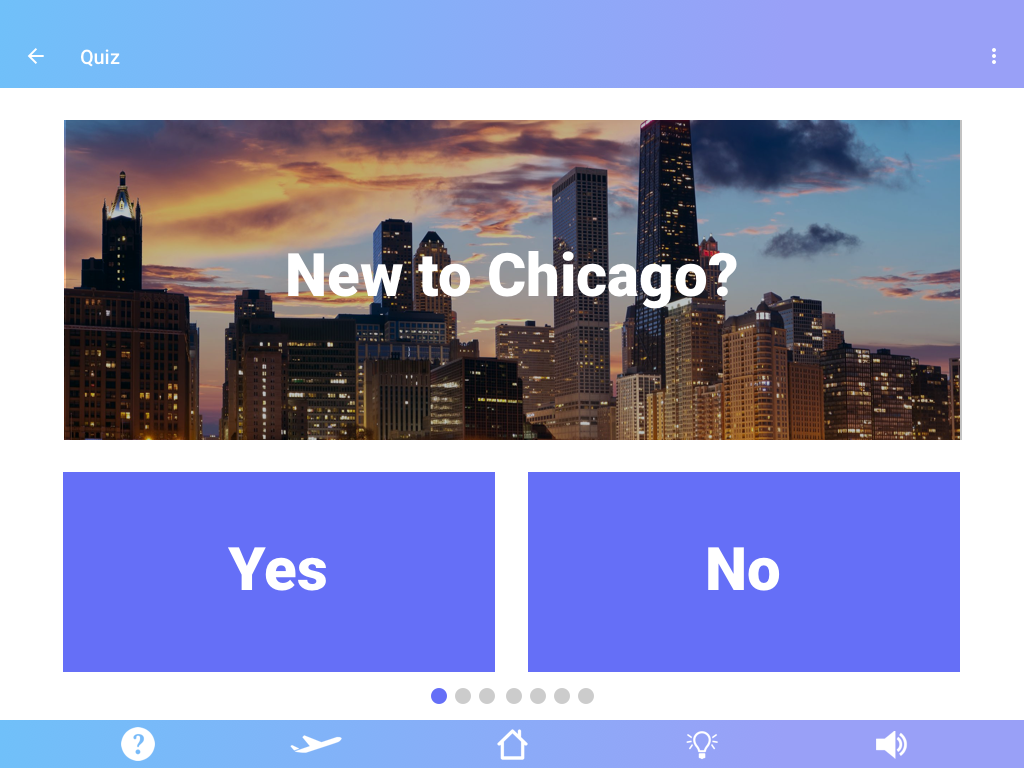
Quiz screen
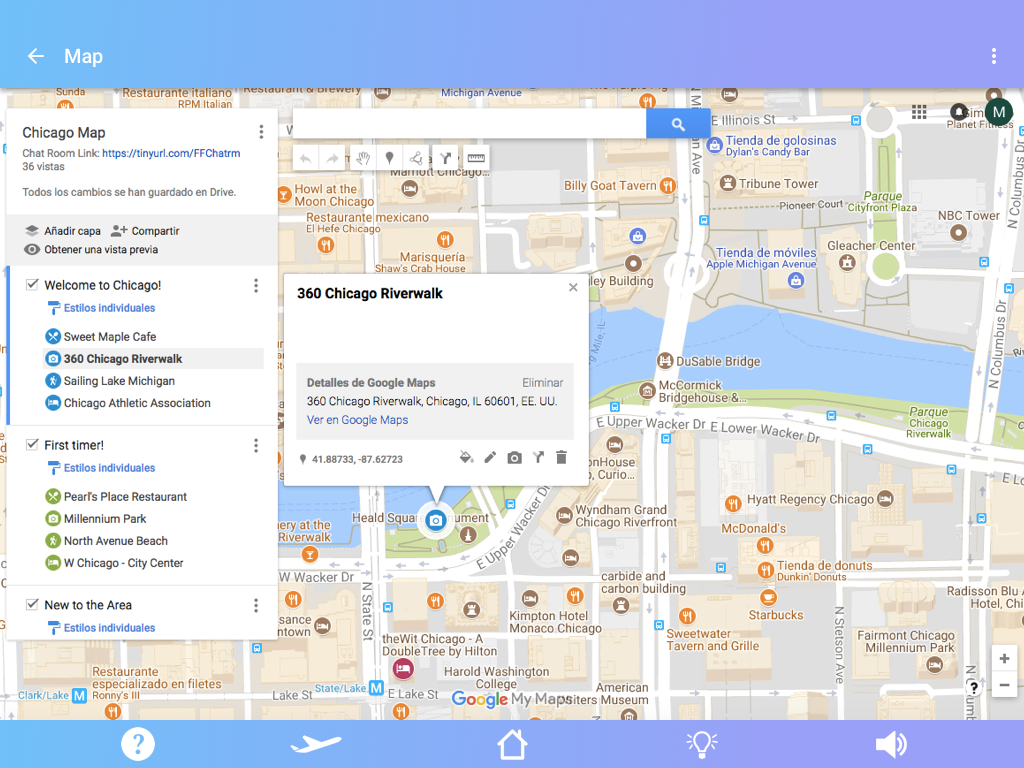
Map screen
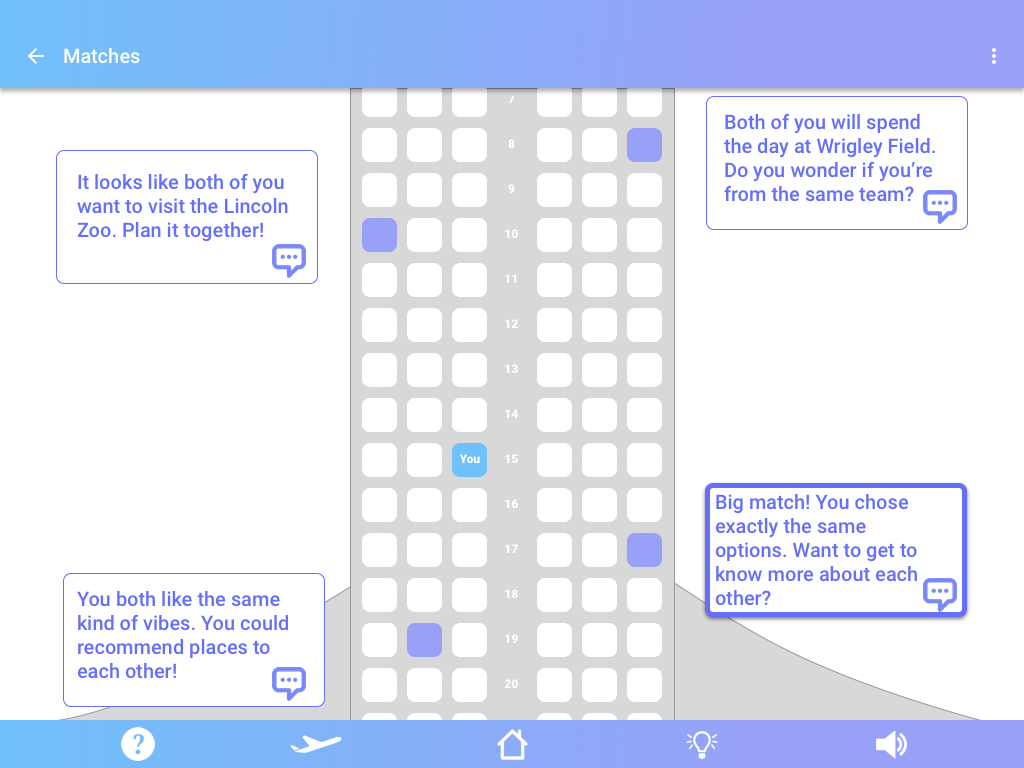
Chat Room screen
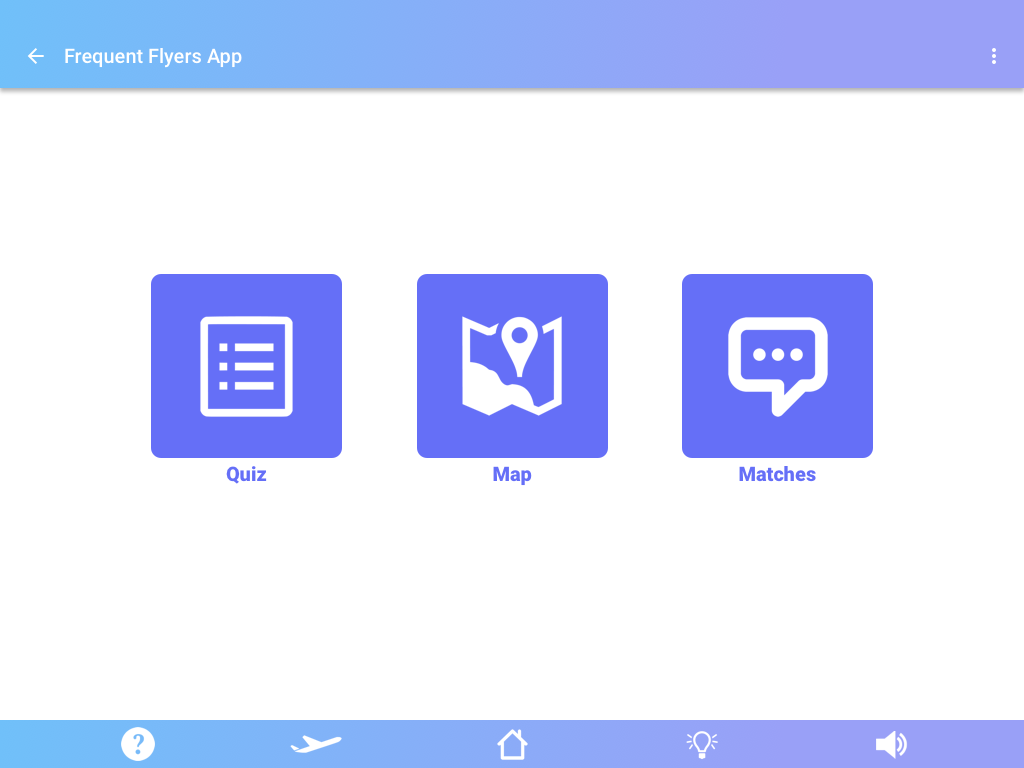
Navigating screen
Conclusion
Overall, our feedback from our second prototype was more positive than our
previous version. Users found our prototype to be more fun and more simple in
our second trial, and the BuzzFeed video was overall a success, as one user
quoted “I enjoyed how you used pictures and the quiz. I liked seeing the different
foods and places, all while it being very informative.” While prototyping,
we observed users smiling and chuckling when opening up the quiz which we
interpreted as a sign that they found the quiz enjoyable to some degree. Users
did suggest having more options available on the map and allowing users to
edit their itinerary. One user commented “I liked seeing the legend and the
many destinations, however one of my locations was very far from the rest
and I wanted the ability to drag that point and replace it with someone
else’s attraction.” Additionally, users wanted the tool to suggest passengers
to connect with based on mutual points of interest and other conversation
starters-all which our team would hypothetically look forward to in our next
iteration. One user suggested having less people in the chat room because
“imagining having 100 people in a single chat room would get overwhelming.”
Due to our small testing population, we combined all users into a single
group chat to avoid the potential problem of only one or two users being
separated into a chat room by themselves. However, if we did have a larger
testing group we would separate the chat rooms instead by grouping users
together based on common itineraries from their quiz results.
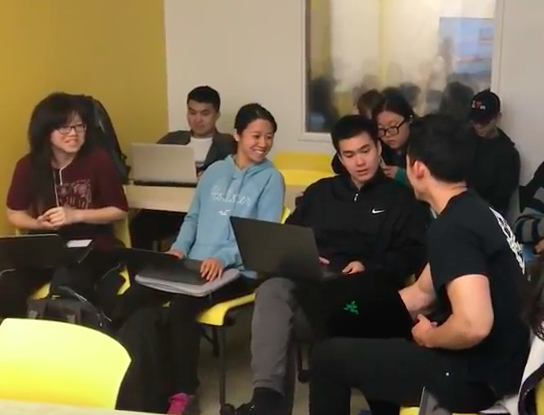
In-Class User Testing Response